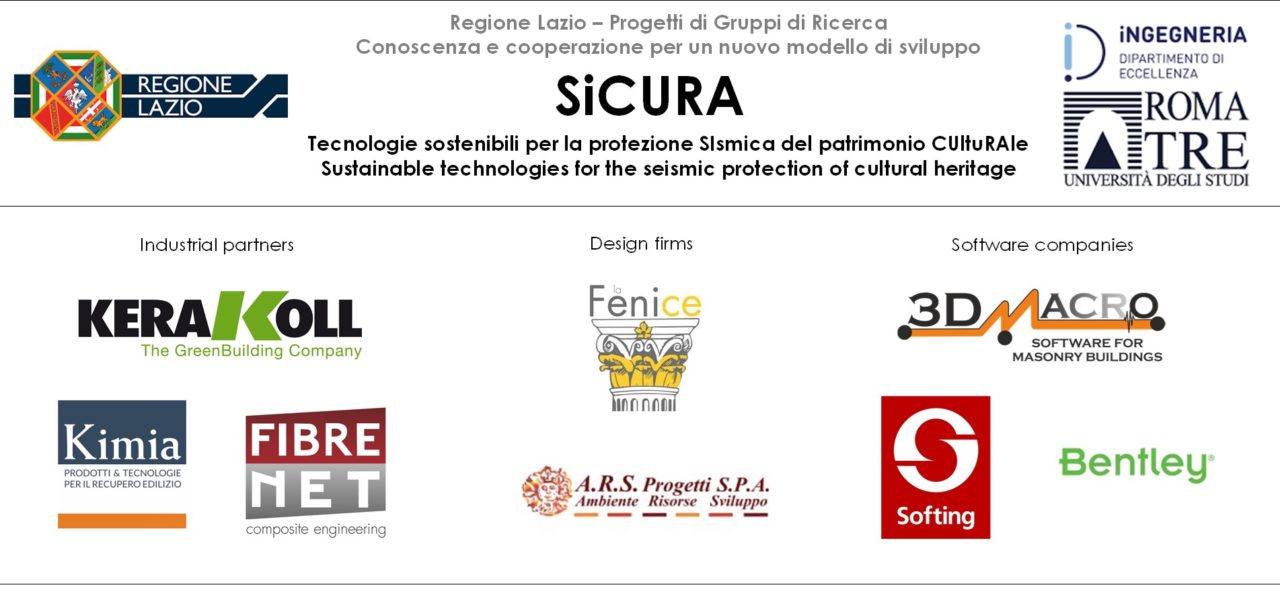Description of the project
Project goals
The project aims at achieving the following goals:
- To develop new solutions for the protection of cultural heritage against natural hazards (e.g., earthquakes, settlements, floods) that improve the safety of people and preserve monuments, thanks to the use of high performance materials that are compatible with the principles of restoration and conservation applied according to suitable design methods.
- To characterize compatible strengthening systems that ensure mechanical effectiveness and durability for applications to historical constructions.
- To define experimental protocols and characterization of the mechanical behavior of the systems in terms of traction behaviour, overlay-to-substrate compatibility and durability, with all the difficulties deriving from the intrinsically fragile nature of the inorganic matrix.
- To develop models for the numerical simulation of the seismic behaviour of reinforced structures.
- To validate the effectiveness of composite systems through experiments on real-scale buildings.
- To determinate design methodologies and automatic calculation codes that can be used by practitioners for applications to cultural heritage.
- To promote the knowledge transfer from the product development stage to the professional practice through field tests.
Expected outcomes
The following benefits are expected:
- The development of innovative systems based on the use of high-strength fabrics, also with natural fabrics, and inorganic matrices based on lime mortars suitable for applications to historical buildings.
- The characterization of the mechanical performance and environmental durability of the TRM systems, through a dedicated experimental investigation.
- The definition of constitutive models that simulate tensile behaviour and bond strength of TRM composites.
- The implementation of specific calculation software for the numerical simulation of the seismic behaviour of TRM-reinforced structures;
- The validation of the effectiveness of TRM systems through in-situ and full-scale experiments.
- The dissemination of results through special sessions in the international conferences as well as through existing funded research networks (CNR research group set for the development of design guidelines of TRM reinforcements, Rilem TC 250-CSM, RILEM TC IMC, COST TU1207, ACI 549). Dissemination actions will also contribute to the development of an improved knowledge on the strengthening of historic structures with composites and promote future research actions and cooperation initiatives.
Links with other projects and scientific committees
- SITEC laboratory – Seismic tables of ENEA Casaccia’s research centre
- CNR’s research group about the design of FRCM (Fabric Reinforced Cementitious Matrix) systems
- COST Action TU1207 – Next generation guidelines for composites in contsructions
- Rilem Technical Committee 250-CSM – Composites for Sustainable Strengthening of Masonry
- Rilem Technical Committee IMC – Inorganic Matrix Composites
- ACI 549 – RILEM TC 250-CSM Liason Committee – Thin Reinforced Cementitious Products and Ferrocement
- SMART ENVIRONMENTS 2015 – 2017
- Composites with inorganic matrix for sustainable strengthening of architectural heritage – MAECI 2016 – 2018
